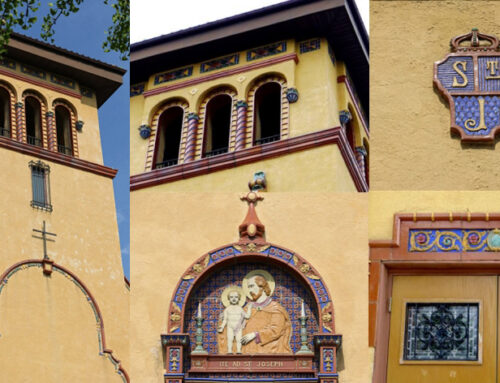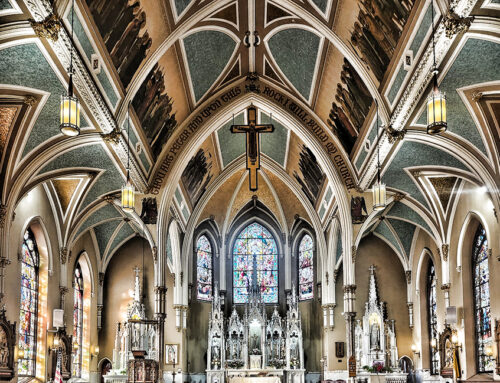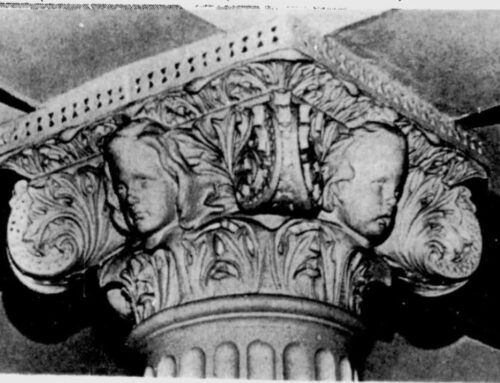The “Gate” is an outdoor metal sculpture by Robinson Fredenthal, commissioned by the Reading Redevelopment Authority for the North Sixth and Penn streets courtyard in the Downtown East Urban Renewal Area. It was assembled by Eastern Machine Products Inc. and involved a complex process of fabricating from over 9,000 pounds of stainless steel based on Fredenthal’s designs and a stress engineer’s drawings. The sculpture, an 18-foot-wide, 16-foot-high angular archway, was intended as a portal for pedestrians, emphasizing the integration of form and environmental context.
Below: The Gate Sculpture by Robinson Fredenthal.
The “Gate” sculpture was completed and placed in 1979 on Penn Street, between the city’s two new major office buildings, as part of the Downtown East Urban Renewal Area in Reading, the General Battery Corp. building (completed in 1979) and the Penn Square Center (completed in 1978). It was intended to serve as a portal for pedestrians walking between these buildings, integrating art with the urban environment and engaging with the public in a meaningful way.
Below: The Penn Square Office Center (far left) and General Battery Building (right).

The construction of the sculpture was a significant undertaking, taking almost five months to complete. It began as a tiny cardboard model and was constructed with an inner frame of ribs, with metal sheets sheared and welded under Fredenthal’s supervision. The main welder, David Berger, aimed for consistency by being the primary person to weld the piece, which was then finished with a matte finish without frills, reflecting Fredenthal’s aesthetic intention.
Upon installation, the sculpture stirred various interpretations and some controversy, particularly regarding its finish. Fredenthal envisioned the burn marks from welding and surface scratches as part of the sculpture’s character, reflecting a raw, American spirit. However, the Reading Redevelopment Authority and some of its Fine Arts Board members viewed these marks as imperfections, expecting a more polished appearance. Despite the disagreements, the sculpture was eventually accepted by the authority, with a final $5,000 payment approved for the piece, though some board members expressed their disapproval of the unfinished appearance.
The sculpture, through its rough-hewn and aggressive stance, contrasts with other more polished pieces, embodying a deliberate aesthetic choice by Fredenthal to showcase the authenticity and imperfections of the material and the process of creation, reflecting the broader themes of truth, perfection, and artistic expression.







When I was younger back then all the kids said it was a piece of Skylab that came down😉